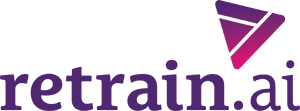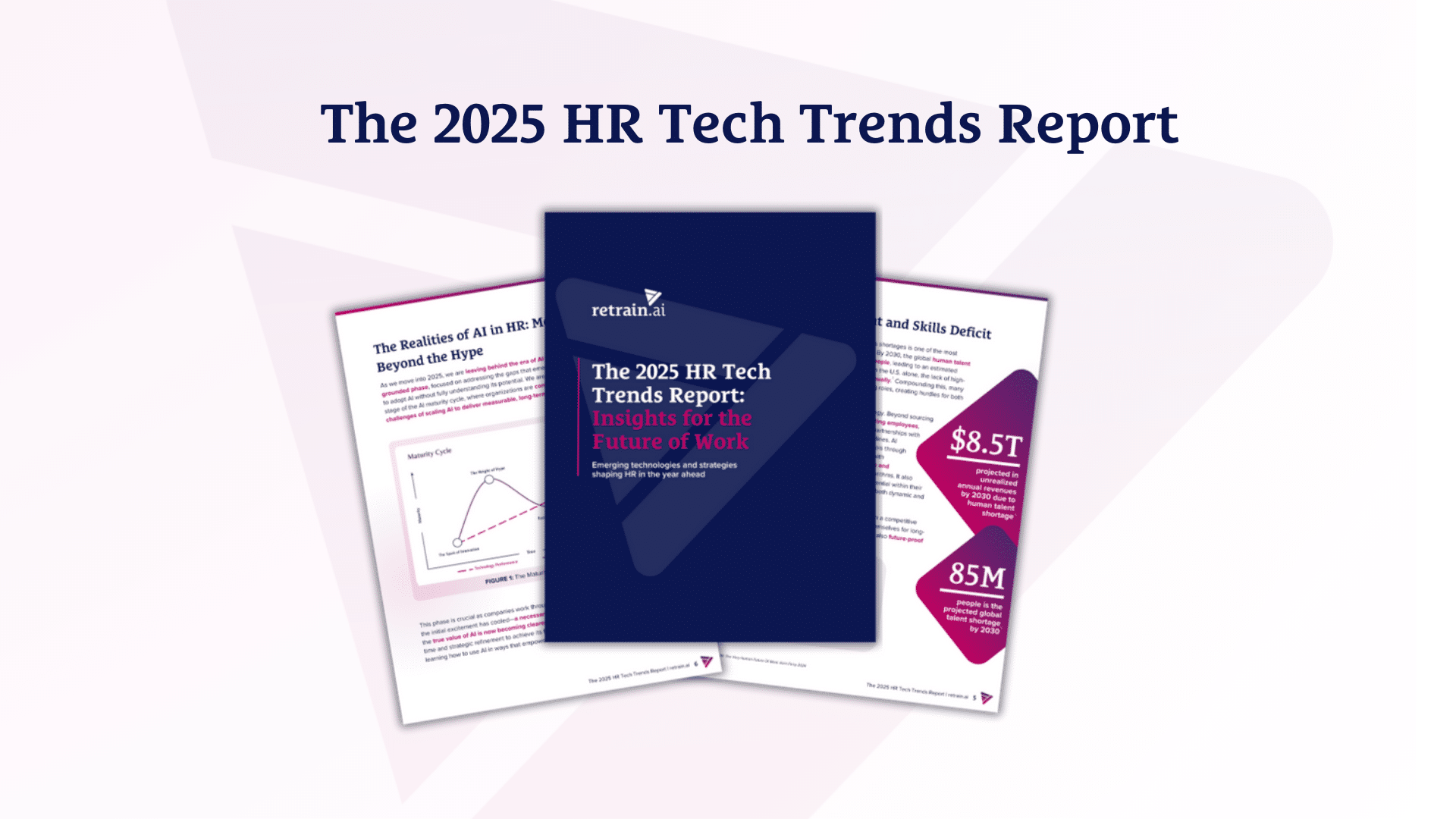Answers to our most frequently asked questions.
-
What is Artificial Intelligence (AI)?
In its simplest form, AI is a technology that’s able to recognize patterns in data. To do that, machine learning systems simulate human intelligence processes using AI applications like natural language processing.
-
What is Talent Intelligence?
Talent Intelligence is AI-driven technology that unifies, organizes and interprets internal and external data so HR leaders can make better workforce planning decisions.
-
How does retrain.ai compare to new technologies like ChatGPT?
ChatGPT is a consumer-focused generative AI tool that uses machine learning to index retrievable content and mimic writing styles. As leaders in the AI space, we see ChatGPT as an example of a set of tools with the potential to transform business processes.
Through the lens of an enterprise-level solution, however, such tools lack critical components needed for large business organizations. These include explainability, customization by industry and service level agreements (SLA). You can read more about this topic here.
-
What does Responsible AI mean?
When an HR solution uses Responsible AI, it ensures that automated processes aren’t adversely or disproportionately impacting diversity in the hiring process. It does this by screening candidates based on skills–not job titles, demographics, former companies or the like.
Leveraging Responsible AI within an HR Tech stack prioritizes internal and external job candidates based on what they can accomplish and their potential for future success. You can learn more about the 5 Pillars of Responsible AI here.
-
Are there regulations around the use of Responsible AI?
Yes, and they are increasing. For example, a new law enacted in New York City will require organizations using AI in hiring processes to submit to independent AI audits to ensure compliance. As it applies to any company within–or hiring from within–the city, it has global implications for countless enterprises. You can read more about the NYC AI Audit law here.
-
How does Responsible AI support DEI efforts?
Responsible AI mitigates bias risk by evaluating candidates on skills only, avoiding information such as a candidate’s age, education, names, demographics, and the like. As such, Responsible AI helps create equal opportunity for hiring and promotion while supporting DEI (diversity, equity, and inclusion) goals.
-
What does “Black box” or “White box” technology mean?
These terms refer to whether an AI solution is fully explainable. With a “white box” solution, AI developers can easily demonstrate how the AI arrived at a particular outcome. On the other hand, with a “black box” solution, it’s impossible to determine how the AI-generated its outcome.
Transparency into an AI solution’s process and its outcomes is critical for explainability, a key pillar of Responsible AI. Blind trust in a “black box” solution makes it problematic when weighing the value of the system or for passing regulatory AI audits. You can learn more about these differences here.
Inject more wisdom into your workforce planning.
Enhance your decision-making and build the workforce of the future with with responsible, AI-driven talent intelligence. Schedule your demo today.




